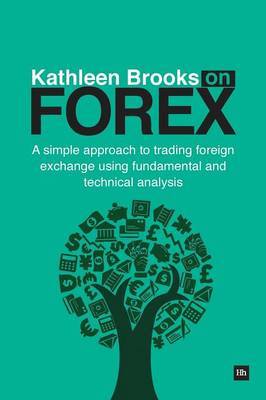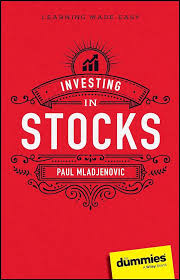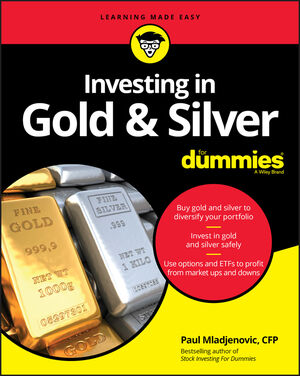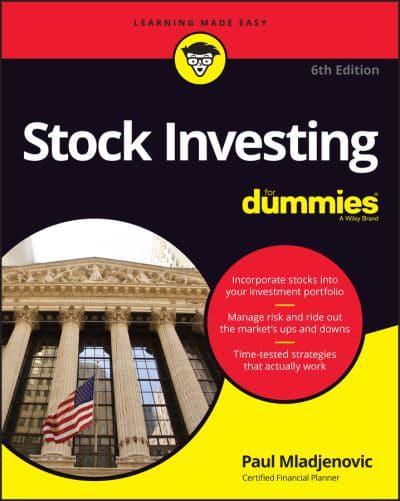Currency trading for Dummies
- ISBN: 9781119824725
- Editorial: For Dummies
- Fecha de la edición: 2022
- Lugar de la edición: Hoboken (NJ). Estados Unidos de Norteamérica
- Edición número: 4th ed.
- Colección: For dummies
- Encuadernación: Rústica
- Medidas: 24 cm
- Nº Pág.: 416
- Idiomas: Inglés

Trade currencies like a seasoned pro with this friendly, fact-filled guide to the forex market
Over $6 trillion changes hands in the foreign exchange market every day. You can jump straight into the action with expert guidance from the hands-on Currency Trading For Dummies. You'll learn how the foreign exchange market works, what factors influence currency values, and how to understand financial data. When you're ready to create your own game plan for trading currencies, you'll be able to build it around your investment objectives, experience level, and risk appetite. You'll also find details on the latest trends in currency trading, including currency ETFs, cryptocurrencies, and currency options.
From essential newcomer knowledge to advanced positioning advice, Currency Trading For Dummies offers straightforward instruction that helps you:
Source data and market intelligence, employ technical analysis, and use the latest tech to find the most lucrative trading opportunities
Understand the most recent Securities and Exchange Commission (SEC) rules and regulations governing currency trading
Avoid common pitfalls and mistakes made by novice and experienced currency traders
Recognize profitable opportunities in the world of ETFs, currency options, and cryptocurrencies
Successful currency trading is within your grasp. This accessible roadmap to trading mastery provides the foundational knowledge you need to create a structured, winning strategy and conquer the forex market.
TABLE OF CONTENTS
Introduction 1
About This Book 1
Foolish Assumptions 3
Icons Used in This Book 4
Beyond the Book 5
Where to Go from Here 5
Part 1: Getting Started with Currency Trading 7
Chapter 1: Currency Trading 101 9
What Is Currency Trading? 9
Speculating as an enterprise 10
Currencies as the trading vehicle 11
What Affects Currency Rates? 12
Fundamentals drive the currency market 12
But sometimes it’s the technicals that are driving
the currency market 13
Or something else may be a driving force 14
Developing a Trading Plan 14
Finding your trading style 14
Planning the trade 15
Executing the Trading Plan from Start to Finish 16
Chapter 2: What Is the Forex Market? 19
Getting Inside the Numbers 21
Trading for spot 21
Speculating in the currency market 21
Getting liquid without getting soaked 22
Around the World in a Trading Day 23
The opening of the trading week 23
Trading in the Asia-Pacific session 24
Trading in the European/London session 25
Trading in the North American session 26
Key daily times and events 27
The U.S dollar index 28
Looking at Currencies and Other Financial Markets 30
Gold 31
Oil 31
Stocks 32
Bonds 33
Getting Started with a Practice Account 34
Chapter 3: Who Trades Currencies? Meet the Players 37
The Interbank Market Is “the Market” 38
Getting inside the interbank market 38
Bank to bank and beyond 39
Hedgers and Financial Investors 41
Hedging your bets 42
Global investment flows 44
Speculators: Running the Forex Show 45
Hedge funds 45
Day traders, big and small 48
Governments and Central Banks 48
Currency reserve management 49
The Bank for International Settlements 50
The Group of Twenty 51
Chapter 4: The Mechanics of Currency Trading 53
Buying and Selling Simultaneously 53
Currencies come in pairs 54
The long and the short of it 57
Looking at Profit and Loss 59
Margin balances and liquidations 59
Unrealized and realized profit and loss 60
Calculating profit and loss with pips 61
Factoring profit and loss into margin calculations 62
Understanding Rollovers and Interest Rates 62
Currency is money, after all 63
Value dates and trade settlement 64
Market holidays and value dates 65
Applying rollovers 65
Checking Out Currency Prices 67
Bids and offers 67
Spreads 68
Executing a Trade 68
Trading online or on the phone 69
Orders 72
Part 2: Data and Details You Can Use to Trade Currencies 79
Chapter 5: Looking at the Big Picture 81
Currencies and Interest Rates 82
The future is now: Interest rate expectations 84
Relative interest rates 84
Monetary Policy 101 86
Looking at benchmark interest rates 87
Easy money, tight money 87
Unconventional easing 89
Watching the central bankers 90
Interpreting monetary policy communications 91
Official Currency Policies and Rhetoric 94
Currency policy or currency stance? 94
Calling the shots on currencies 95
Taking a closer look at currency market intervention 98
Financial stability 101
Debts, deficits, and growth 101
Gauging credit risk 102
Geopolitical Risks and Events 104
Gauging risk sentiment 105
Risk on or risk off? 106
Chapter 6: Cutting the Fog with Technical Analysis 109
The Philosophy of Technical Analysis 110
What is technical analysis? 110
What technical analysis is not 111
Forms of technical analysis 111
Finding support and resistance 112
Waiting for confirmation 114
The Art of Technical Analysis 115
Bar charts and candlestick charts 115
Drawing trend lines 117
Recognizing chart formations 118
Fibonacci retracements 128
The Science of Technical Analysis 130
Momentum oscillators and studies 130
Trend-identifying indicators 134
Trading with clouds: Ichimoku charts 136
Chapter 7: Getting Down and Dirty with Fundamental Data 139
Finding the Data 140
Economics 101 for Currency Traders: Making Sense of Economic Data 141
The labor market 141
The consumer 142
The business sector 143
The structural 143
Assessing Economic Data Reports from a Trading Perspective 144
Understanding and revising data history 144
Getting to the core 145
Market-Moving Economic Data Reports from the United States 146
Labor-market reports 147
Consumer-level data reports 149
Business-level data reports 152
Structural data reports 155
Major International Data Reports 159
Eurozone 159
Japan 160
United Kingdom 161
Canada 162
Australia 162
New Zealand 162
China 163
Chapter 8: Getting to Know the Major Currency Pairs 165
The Big Dollar: EUR/USD 166
Trading fundamentals of EUR/USD 166
Trading behavior of EUR/USD 170
Tactical trading considerations in EUR/USD 172
East Meets West: USD/JPY 174
Trading fundamentals of USD/JPY 174
Price action behavior of USD/JPY 179
Tactical trading considerations in USD/JPY 181
The Other Majors: Sterling and Aussie 182
The British pound: GBP/USD 183
The new kid in town: Trading the Aussie 185
Understanding Forex Positioning Data 187
How to interpret the data 187
The FX fix 188
Forex and regulation 188
Chapter 9: Minor Currency Pairs and Cross-Currency Trading 189
Trading the Minor Pairs 190
Trading fundamentals of USD/CAD 190
Trading fundamentals of NZD/USD 194
Tactical trading considerations in USD/CAD, AUD/USD, and NZD/USD 196
Trading the Scandies: SEK, NOK, and DKK 199
Swedish krona: “Stocky” 199
Norwegian krone: “Nokkie” 199
Danish krone: “Copey” 200
Checking Out Cross-Currency Pairs 200
Understanding reasons for trading the crosses 201
Stretching the legs 202
Trading the JPY crosses 204
Trading the EUR crosses 204
Part 3: Executing a Trading Plan 207
Chapter 10: Pulling the Trigger 209
Getting into the Position 209
Buying and selling at the current market 210
Averaging into a position 211
Trading breakouts 215
Making the Trade Correctly 220
Buying and selling online 220
Placing your orders 222
Chapter 11: Managing the Trade 225
Monitoring the Market While Your Trade Is Active 226
Following the market with rate alerts 226
Staying alert for news and data developments 227
Keeping an eye on other financial markets 228
Updating Your Trade Plan as Time Marches On 230
Trend lines move over time 231
Impending events may require trade plan adjustments 233
Updating Order Levels as Prices Progress 234
Increasing take-profit targets 234
Tightening stop-loss orders to protect profits 235
Chapter 12: Tax Considerations 237
Determining Whether You Have Trader Tax Status 238
Understanding Ordinary Income, Capital Gains, and Capital Losses 240
Investigating ordinary income 240
Looking at long-term capital gains 241
Coping with capital losses 242
Evaluating scenarios of gains and losses 243
Buckling Down and Paying Taxes to the IRS 244
Tax notices 244
Tax forms 245
The softer side of the IRS: Tax deductions 246
Surveying Tax Specifics for Different Types of Currency-Related Activities 248
First things first: Do you use Internal Revenue Code 1256 or 988? 248
Taxes on currency ETFs 248
Taxes on futures and options 249
Taxes on cryptocurrencies 249
Taking Advantage of Tax-Advantaged Retirement Investing 250
IRAs 250
401(k) plans 252
Seeking Some Tax Resources 252
PART 4: FOREX ALTERNATIVES 253
Chapter 13: Currency Exchange-Traded Funds 255
Defining Currency ETFs 256
Picking Out the Pros of Currency ETFs versus Other Currency Vehicles 257
Currency ETF advantages 257
Other factors when choosing currency ETFs 258
Comparing U.S Dollar Bullish and Bearish ETFs 260
Feeling bullish 260
Being bearish 262
Examining Other Currency ETFs 263
Euro ETFs 263
Yen ETFs 264
Choosing Currency ETFs: Hedged or Unhedged? 265
Studying Some Currency ETF Resources 267
Chapter 14: Currency Futures 269
Defining Currency Futures 270
Comparing Currency Trading and Currency Futures 271
Focusing on the Fundamentals of Currency Futures Contracts 271
Basics included in a futures contract 272
Margin and maintenance requirements 272
Common currency futures contracts 273
Leverage: The double-edged sword 275
Surveying Basic Futures Trading Strategies 276
Going long 276
Other strategies 277
Reading Currency Futures Quotes 278
Sizing Up E-Minis and E-Micros 279
E-minis 101 279
Trading with the E-micro 280
Common currency E-mini and E-micro contracts 281
Checking Out Futures Trading Resources and Brokers 282
Chapter 15: Currency Options 283
Introducing the Basics of Options 283
Why consider options? 284
What assets have options on them? 285
Buying a Call Option for Big Gains 285
Understanding how buying a call option works 286
Looking at the features of a call option 287
Distinguishing the “moneyness” of call options 287
Writing a Call Option to Generate Income 289
What if the security goes to the strike price or higher? 290
What if you don’t want to sell at the strike price? 290
What if the security’s price stays flat or moves sideways? 291
What if the security’s price goes down? 291
How often can you write a covered call? 291
Using a Call Option for Safety or Hedging 292
Picking Apart Put Options 293
Use #1: Bearish speculation 293
Use#2: Generating income 293
Use#3: For hedging and protection 294
Considering Some Combination Trades 295
Debit spreads and credit spreads 295
Diagonal and vertical calendar spreads 295
The bull call spread 296
The bear put spread 298
Breaking Down the Mechanics of Making Options Trades 299
Choosing a brokerage firm and gaining approval for options 299
Placing an order 300
Reading an options table 301
Getting a Few Golden Rules for Options Beginners 303
Trying Options Tutorials and Resources 305
Chapter 16: Trading Cryptocurrencies 307
Describing Cryptocurrencies 308
Considering the Main Benefits and Issues of Cryptocurrencies 308
It’s Your Choice: Participating in the Cryptocurrency World in Three Ways 309
The greatest control: A cryptocurrency wallet 310
The simplest approach: A brokerage account 310
The safest approach: Business transactions 310
Looking at Leading Cryptocurrencies 311
Bitcoin (The mother of all cryptos) 313
Ethereum 314
Dogecoin 314
Taking the First Steps to Buying Cryptocurrencies 315
Choosing a platform or broker 316
Selecting storage 317
Examining Cryptocurrency ETFs 318
Getting a Few Golden Rules about Cryptocurrencies 319
Digging into Cryptocurrency Resources 321
Part 5: The Part of Tens 323
Chapter 17: Ten Habits of Successful Currency Traders 325
Trading with a Plan 325
Anticipating Event Outcomes 326
Staying Flexible 326
Being Prepared for Trading 326
Keeping Technically Alert 327
Going with the Flow (Trading the Range) 327
Focusing on a Few Pairs 328
Protecting Profits 328
Trading with Stop Losses 329
Watching Other Markets 329
Chapter 18: Ten Rules of Risk Management 331
Trade with Stop-Loss Orders 332
Leverage to a Minimum 332
Trade with a Plan 332
Stay on Top of the Market 333
Look for the Right Opportunities 333
Step Back from the Market 333
Take Profit Regularly 333
Understand Currency-Pair Selection 334
Double-Check for Accuracy 334
Take Money Out of Your Trading Account 335
Chapter 19: Ten Great Resources for Currency Trading 337
Technical Analysis of the Financial Markets 338
Japanese Candlestick Charting Techniques 338
Elliott Wave Principle 338
Technical Analysis For Dummies 339
The Book of Five Rings 339
Market Wizards: Interviews with Top Traders 339
FOREX.com 340
Zero Hedge 340
BabyPips.com 340
Forex Factory 341
Chapter 20: Ten (Or So) Golden Rules for Currency Trading Beginners 343
Read, Read, Read 343
Simulate Trading First 344
Start Small 344
Keep a Ceiling on Your Total Speculating 344
Be Diversified 345
Have a Rule on Profits (and Losses!) 345
Analyze the Trade That Went Bad 345
Learn from Others 346
Recognize That History May Not Repeat, but It Does Rhyme 346
Specialize If Possible (In Other Words, Focus!) 347
Know That Successful Trading Isn’t Just What You
Do but How You Do It 347
Finally, Don’t Stop Educating Yourself 348
Chapter 21: Ten Alternatives to Currencies 349
Gold 349
Silver 350
Cryptocurrencies 350
Common Stocks 351
The “I” Bond 351
Commodities 352
Mutual Funds 352
Country Exchange-Traded Funds 353
Collectibles 353
Real Estate Investment Trusts 354
Appendix: Trading Strategies 355
Index 379










